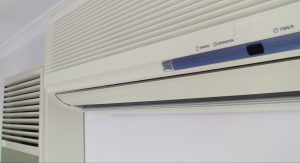| Average Australian home | Up to $1300 a year / 12.3kWh a day / 3 ton C02 per year* |
|---|---|
| Smart renter | Up to $600 a year / 6kWh a day / 1.4 ton C02 per year* |
| Very smart renter | Up to $200 a year / 2kWh a day / 0.5 ton C02 per year* |
*A price and energy range has been given here because how much you pay will depend on the type of heating and cooling you use and which part of Australia you live in.
As long as your rental has a reasonable level of thermal performance for your area, there’s plenty you can do to drastically lower your heating and cooling bills without sacrificing comfort.
First step: Acclimatise to the seasons
- Don’t fight the seasons, enjoy them; winter is a great time to get some extra sleep, eat delicious hearty meals and enjoy cosy evenings while summer is a great time for getting outdoors, eating seasonal fruits and enjoying longer days.
- Wear the right clothing for the right season. It should go without saying that wearing summer clothes in winter is never a good way to stay warm.
- In winter, wearing a set of thermals underneath your normal clothes almost doubles the insulating effect of your clothes, yet they are not noticeable to you.
- Use a blanket on the couch as reading and watching TV are activities where the body cools down.

“crochet blanket love” by Tania & Artur is licensed under CC BY-NC-ND 2.0
- Use the right bed linen for the right season. Polyester or cotton works best for the warmer months while flannel is much better for the colder months.
- Make use of windows, curtains and blinds to let in cooler or warmer air, sun or light when desired and to block them out when they are not wanted.
- Adjust your routine to the weather; save hard tasks in summer for cooler times of the day, rest during the heat of the day and eat lighter foods.
- Enjoy outdoor cooking in summer to keep the heat generated out of the house.
- It takes 2-3 weeks for our bodies to acclimatise to warmer and cooler weather so don’t despair if you feel a little uncomfortable at the beginning of a new season.
- Make a little effort to acclimatise and you’ll enjoy greater thermal comfort in all conditions.
Second step: Use personalised heating and cooling if need be

“GE Fan (14 of 19)” by Josh Self is licensed under CC BY-NC-SA 2.0
- Personalised heating and cooling can further increase you comfortable temperature range with a tiny amount of energy.
- An electric blanket can get a bed warm in 15 minutes on a really cold night eliminating the need for overnight or bedroom heating.
- Heated slippers or a heated throw rug can further decrease the need for space heating which lying on a couch or working at a desk.
- A portable or ceiling fan provides effective cooling for indoor temperatures up to 30 degrees which really reduces the need for air conditioning.
- Personal heating and cooling can run off a small back up power system which is not possible for space heating or air conditioning.
Third step: Smart space heating and cooling

- By acclimatising to different seasons, you should be more comfortable in a greater temperature range so set your heating and cooling accordingly.
- Only heat and cool the areas you are using, for example, the kitchen and loungeroom.
- Occupants of a house can share a heated and cooled space together to make your energy go further.
- Close exterior doors and windows unless you’re using an evaporative cooler.
- Anticipate weather changes so you can switch off heating or cooling when it’s not needed.
Using the above tips should easily get your heating and cooling energy use below a quarter of what the average Australian needs regardless of what heating and cooling system you have and you should find your general thermal comfort to be better in all seasons.
Read more: Thermal comfort article or read The Renewable heater you never knew you had to get a grip on what are the best space heating and cooling options for renters to look out for.